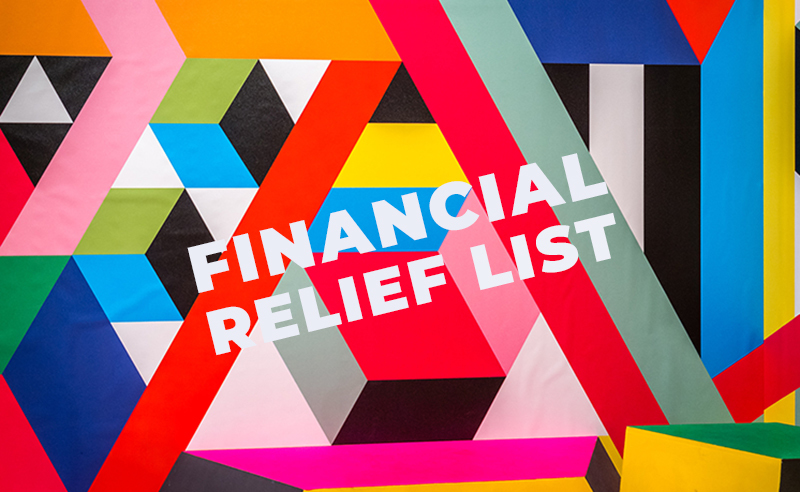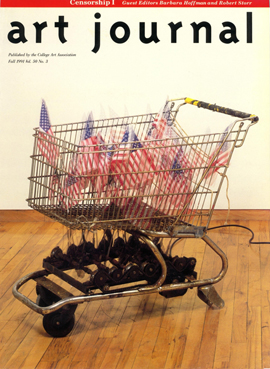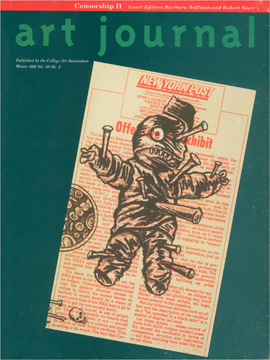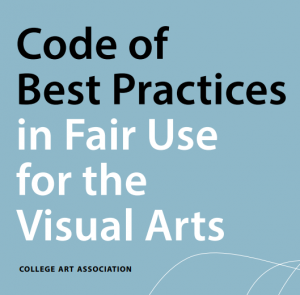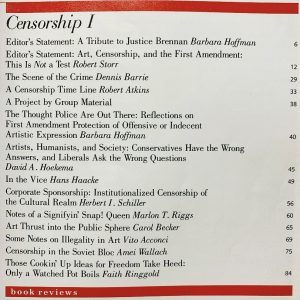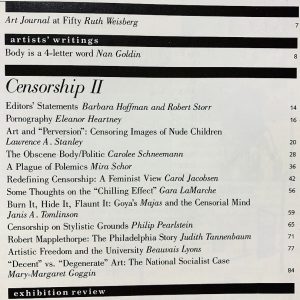CAA News Today
Affiliated Society News for May 2020
posted by CAA — May 07, 2020
Affiliated Society News shares the new and exciting things CAA’s affiliated organizations are working on including activities, awards, publications, conferences, and exhibitions.
Interested in becoming an Affiliated Society? Learn more here.
Women’s Caucus for Art (WCA)
Historians of Netherlandish Art (HNA)
Call for Session Proposals for HNA Sponsored panel at CAA 2021:
HNA is seeking submissions for our sponsored panel at the College Art Association’s annual conference, which will be held February 10-13th, 2021, in New York City.
Proposals should address the session description:
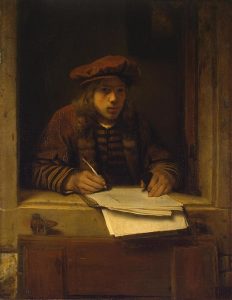
Samuel Dirksz van Hoogstraten, Self-portrait, late 1640s/1650, via Wikimedia Commons
Published in 1678, Samuel van Hoogstraten’s painting treatise, Inleyding tot de hooge schoole der schilderkonst, anders de zichtbaere wereld (Introduction to the Academy of Painting, or the Visible World), is simultaneously a pedagogical guide and a theoretical treatise on art, grounded in the painter’s practical knowledge. Written in the vernacular for an audience of Dutch artists, as well as collectors, connoisseurs, amateurs and lovers of art, Hoogstraten’s text has been mined by art historians for its conceptual vocabulary, classical referents, theories of optics and vision, and for its salacious anecdotes about Hoogstraten’s famous teacher, Rembrandt. This session seeks papers addressing the key themes of this heterogeneous text, and/or the multi-faceted career of its author, in honor of the 2020 publication of the first English translation of van Hoogstraten’s work by Celeste Brusati. Beyond the writings of van Hoogstraten, papers may address broader questions of artistic pedagogy and travel, artists’ writings, material knowledge and embodied practice, imitation and aesthetic judgment in the early modern Low Countries.
Please send proposals (ca. 250 words) and CVs to sporras@tulane.edu by May 10.
Association of Print Scholars (APS)
The Association of Print Scholars (APS) is pleased to award the third annual Collaboration Grant to Jennifer Chuong of Harvard University and Kailani Polzak of Williams College. The grant of $1,000 will support Imprinting Race, a two-day interdisciplinary event, planned for Fall 2020, that will include a keynote lecture, studio workshop, and roundtable discussion that will explore printmaking’s role in tangibly shaping and challenging ideas of racial difference during the long eighteenth century.
This year’s jurors also awarded an Honorable Mention in the amount of $500 to interdisciplinary artist and educator Trisha Gupta for her project, Build a Bigger Table, Not a Higher Wall. This event will include a lecture and woodblock printing demonstration for 150 participants of all ages and skill levels, who will participate in art-making activities using recycled textiles and paper as a means to explore the stories and traditions of immigrants from a diverse range of cultures.
The APS Collaboration Grant funds public programs and projects that foster collaboration between members of the print community through events like lectures, conferences, workshops, and other public programs. APS is currently accepting submissions for the 2021 Collaboration Prize (due January 31, 2021). For eligibility requirements and proposal submissions visit the APS website.
The Association of Print Scholars is additionally pleased to announce our 2021 CAA panel “The Graphic Conscience,” chaired by Dr. Ksenia Nouril, The Jensen Bryan Curator at The Print Center in Philadelphia. The session invites papers addressing transhistorical and transnational case studies of print as a tool for raising public consciousness.
Visual Resources Association News
The VRA international conference for image media professionals scheduled to take place at the Royal Sonesta Harbor Court Hotel in Baltimore from March 24-27, 2020, was cancelled due to the pandemic. Plans move forward for the next VRA conference to be held in Chicago in March 2021 and then Baltimore in 2022. The Annual Business Meeting was held virtually via Zoom on March 25th. Committees, task forces, and chapters also held meetings remotely during the conference week. Alternative ways to deliver the conference sessions and workshops are being explored, including publishing in the VRA Bulletin https://online.vraweb.org/index.php/vrab, the organization’s open access electronic journal of professional practice.
The Visual Resources Association is a multidisciplinary organization, founded in 1982, dedicated to furthering research and education in the field of image management within the educational, cultural heritage, and commercial environments. Since its foundation and even earlier, VRA has been affiliated with or had committee ties to CAA http://vraweb.org/.
The VRA Foundation (VRAF) continues to sponsor the Summer Educational Institute for Digital Stewardship of Visual Information (SEI), which is a joint project with the Art Libraries Society of North America (ARLIS/NA). This year it was scheduled to take place from June 23-26 at Northwestern University in Evanston, IL, but was also cancelled due to the COVID-19 outbreak. For more information, see https://vrafoundation.org/summer-educational-institute/ and if you have any additional questions, please contact SEI Co-Chairs Courtney Baron or Bridget Madden. Meanwhile, the VRAF continues its other initiatives, including regional workshops, professional development grants, project grants, and internship awards.
For more information about the important work and professional development activities sponsored by the Visual Resources Association or the VRA Foundation, please contact Maureen Burns, VRA’s CAA Affiliate Representative at moaburns@gmail.com or 310-489-3792.
BSA (Bibliographical Society of America)
1. Online instruction resources: To help teachers and scholars move forward in the midst of the current health crisis, the BSA website maintains an actively curated list of online instruction resources, including digital repositories for book history teaching, research, & more at https://bibsocamer.org/news/online-instruction-resources-digital-repositories-for-book-history-teaching-more/.
If you know of a resource that should be included, please email bsa@bibsocamer.org with the name and URL of the resource, and short description of what it offers.
2. Webinars: BSA is also offering free, forty-minute webinars throughout the spring 2020 season. Please find a complete list of online learning opportunities here https://bibsocamer.org/news/news-webinars-and-opportunities-for-mutual-aid/ and spread the word to your friends and colleagues. Registration required.
3. BSA Fellowships: To foster the study of books and other textual artifacts in traditional and emerging formats, and in keeping with the value which the Society places on the field of bibliography as a critical interpretative framework for understanding such artifacts, the BSA funds a number of fellowships designed to promote bibliographical inquiry and research. For more information see https://bibsocamer.org/awards/fellowships/. Deadline: 1 November 2020.
ATSAH (Association for Textual Scholarship in Art History)
ATSAH Recent Publications Additional – May 20, 2020
Lynette M.F. Bosch, Professor of Art History and Distinguished Professor at SUNY, Geneseo
Lynette M. F. Bosch, Mannerism, Spirituality and Cognition: The Art of Enargeia, Routledge Press, 2020.
Lynette M. F. Bosck, Demi, Skira Press, 2019.
Charles Burroughs, Professor of Art History at SUNY, Geneseo
Charles Burroughs, “Honour, Classical Architecture, and the Issue of Slavery.” In The Oxford Handbook of the Reception of the Classical Tradition in Architecture, ed. Nicholas Temple, Andrzej Piotrowski, and Juan Heredia (Oxford University Press, 2019), 151-163.
Charles Burroughs, “Mannerism and Architecture: Varieties of Extraordinary in Serlio’s Extraordinary Book.” In Readings on Italian Mannerism II: Architecture and Sculpture, ed. Liana de Girolami Cheney (Peter Lang Publishing, Berlin and New York, 2020), 139-52.
Deborah H. Cibelli, Professor of Art History, Nicholls State University
Deborah H. Cibelli, “Beardsley’s ‘Strife for Love in a Dream'”, in Anxiety, Angst, Anguish in Fin de Siècle Art and Literature, eds. Rosina Neginsky, Marthe Segrestin, and Luba Jurgenson. Newcastle upon Tyne, United Kingdom: Cambridge Scholars Publishing, 2020.
Liana De Girolami Cheney, Professor of Art History (emerita) UMASS Lowell
Liana De Girolami Cheney, “Lavinia Fontana’s Galatea: Personification of Fortune and Venus”
The Journal of Literature and Art Studies vol. 10. no. 1 (January 2020): 42-59.
Liana De Girolami Cheney, “Giorgio Vasari’s Neptune as Cosimo I de’ Medici: The Element of Water as a Political Symbol,” in The Iconography of Water, ed. Pilar Diez del Coral (Lisbon: University of Lisbon, CHAM, 2020), 30-45.
Liana De Girolami Cheney, “Interplay of Grotesques in Giorgio Vasari and Cristofano Gherardi,” in Between Allegory and Natural Philosophy. New Perspectives on Renaissance Grotesques, ed . Damiano Acciarino, Università Ca’ Foscari Venezia and University of Toronto (Fall 2019), 297-330.
Massimiliano Rossi, Professor of Art History, University of Salerno, Italy
2019
La fortuna figurativa del poema epico-cavalleresco, in Letteratura e arti visive nel Rinascimento, a cura di Gianluca Genovese e Andrea Torre, Roma, Carocci, 2019, pp. 261-281.
Vero e falso nella decorazione effimera tra Cinque e Seicento in Veneto: materia e immaginazione all’origine di un canone eccentrico, in The Gentle Art of Fake. A Conference on Copies, Fakes and Appropriations in Contemporary Arts, Milano, Accademia di Brera – Università IULM, 15-16 gennaio 2019, a cura di Tommaso Casini e Laura Lombardi, Cinisello Balsamo (MI), Silvana Editoriale, 2019, pp. 223-231.
2020
L’Elogio dell’Abate Cortenovis: una lezione di metodo lanziano, in Luigi Lanzi a Udine 1796-1801. Storiografia artistica, cultura antiquaria e letteraria nel cuore d’Europa, Convegno di Studi, Udine, 21-23 novembre 2018, a cura di Paolo Pastres, Firenze, Olschki, 2020, pp. 133-145.
Ecfrasi epica e celebrazione dinastica in Bracciolini, tra Bernini e i Barberini, in Francesco Bracciolini. Gli «ozi» e la corte, Introduzione di Maria Cristina Cabani, a cura di Federico Contini e Andrea Lazzarini, Pisa, PUP, 2020, pp. 323-342.
Rosina Neginsky, President of ALMSD, University of Illinois
“Anxiety in Redon’s Works: The Invention of a New Visual Language.” in Anxiety, Angst, Anguish in the Fin de Siècle Art and Literature, edited by Rosina Neginsky, Marthe Segrestin, and Luba Jurgenson. Newcastle upon Tyne, United Kingdom: Cambridge Scholars Publishing, 2020.
News from the Art and Academic Worlds
posted by CAA — May 06, 2020
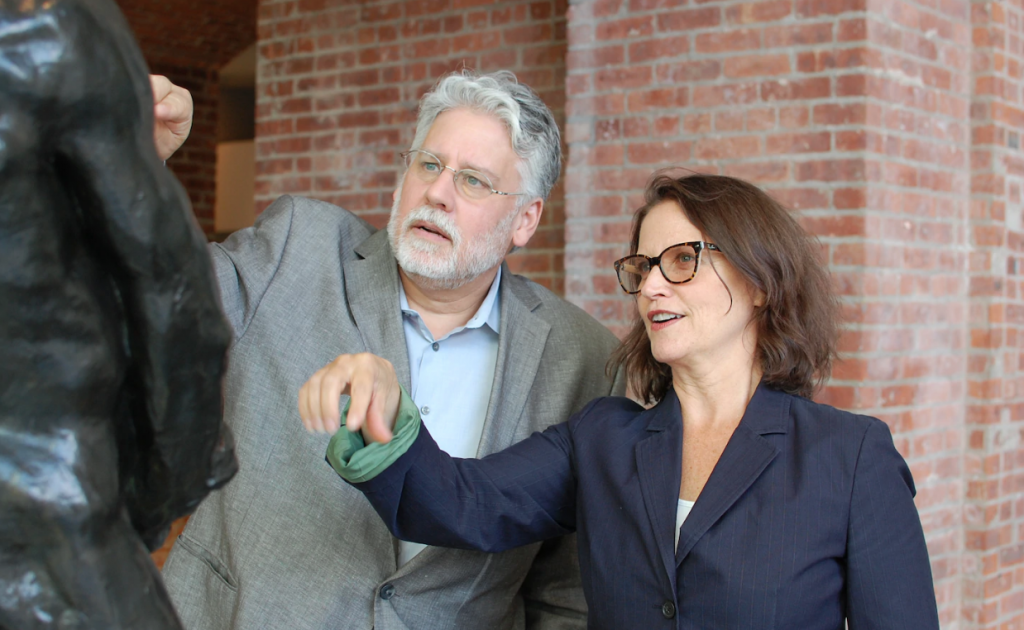
Steven Zucker and Beth Harris, the two art historians behind Smarthistory, look at a bronze scuplture by Auguste Rodin at the Brookyln Museum in 2014. Photo: Lisa Fisher, via Washington Post
|
|
|
|
|
Want articles like these in your inbox? Sign up for our weekly newsletter:
Announcing the 2020 Terra Publication Grant Winners
posted by CAA — Mar 31, 2020
2020 TERRA FOUNDATION FOR AMERICAN ART INTERNATIONAL PUBLICATION GRANT WINNERS
CAA is pleased to announce the 2020 recipients of the Terra Foundation for American Art International Publication Grant.

This program, which provides financial support for the publication of book-length scholarly manuscripts in the history of American art, is made possible by a generous grant from the Terra Foundation for American Art. For this grant, “American art” is defined as art (circa 1500–1980) of what is now the geographic United States.
The four Terra Foundation grantees for 2020 are:
- Monica Bravo, Greater American Modernism: U.S. Photographers and the Mexican Cultural Renaissance, Yale University Press
- José E. Muñoz, Cruising Utopia: The Then and There of Queer Futurity, Brook, translation from English to French
- Craig Owens, Craig Owens: The Indignity of Speaking for Others. Selected Essays, Même pas l’hiver, translation from English to French
- Mona Schieren, Transcultural Translation in the Oeuvre of Agnes Martin: The Construction of Asianistic Aesthetics in American Art after 1945, Columbia University Press and Transcript Verlag, translation from German to English
The International Author Conference Subventions confer two non-US authors of top-ranked books travel funds and complimentary registration to attend CAA’s 2021 Annual Conference in New York, February 10-13; they also received one-year CAA memberships.
The two author awardees for 2020 are:
- Gaëtan Thomas
- Alice Wambergue
Learn More About the Terra Publication Grant
CAA Announces Isimeme Omogbai as Executive Director and CEO
posted by CAA — Mar 30, 2020
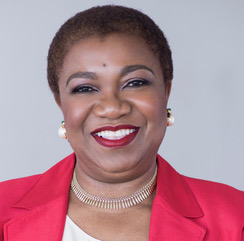
Isimeme Omogbai.
CAA is pleased to announce Isimeme (Meme) Omogbai as its next executive director in an executive search process guided by Arts Consulting Group. Omogbai succeeds David Raizman, who has served as CAA’s interim executive director since July 2019. Omogbai begins at CAA on March 30, 2020.
“It is a pleasure to welcome Meme Omogbai to CAA as Executive Director,” says Jim Hopfensperger, President of CAA. “The Search Committee conveyed its confidence that Meme will apply her unique administrative experiences, striking energy, and clear vision to the important work ahead at this key moment in the Association’s history.”
As executive director, Omogbai is an employee of the CAA Board of Directors and serves as the Association’s chief executive officer. In this role, she will work with board members, committees, and task forces to develop the Association’s strategic plans. Omogbai’s experience in resource management and the museum world will greatly benefit the membership and the larger visual arts, design, education, and cultural communities with whom CAA works. Omogbai will oversee a wide variety of initiatives, including the CAA Annual Conference, an advocacy program, member services activities, the career center, fellowships, grants and opportunities offered by CAA, and the publications program, which includes The Art Bulletin, Art Journal, Art Journal Open, and caa.reviews.
“I am joining CAA at an unprecedented period in world history as people across the globe are trying to understand what COVID-19 means for their families, communities and organizations. As I embark on this new role, I want to emphasize that maintaining the health, well-being, and safety of our staff, membership, and stakeholders is and will always be a top priority,” says Omogbai. “We have seen examples of the indomitable human spirit overcome adversity. Art inspired by challenging experiences is a common thread for many of the world’s most distinguished creative minds. Now more than ever there is a need to provide access to robust edifying visual arts experiences that are inclusive of diverse practices and practitioners for every adult and child, professional and student, nationality and race across the globe. Together we can achieve these objectives. With CAA as the preeminent international leadership organization in the visual arts, promoting these arts and their understanding, we will have the opportunity to perform an invaluable service to humanity.”
Before joining CAA, Omogbai served as a member and past Board Chair of the New Jersey Historic Trust, one of four landmark entities dedicated to preservation of the state’s historic and cultural heritage and Montclair State University’s Advisory Board. Named one of 25 Influential Black Women in Business by The Network Journal, Omogbai arrives with over 25 years of diversified experience in corporate, government, higher education, and museum sectors.
As the first American of African descent to chair the American Alliance of Museums, Omogbai led an initiative to rebrand the AAM as a global, inclusive alliance. While COO and Trustee, she spearheaded a major transformation in operating performance at the Newark Museum and achieved four consecutive years of 4-star ratings for superior management. During her time as Deputy Assistant Chancellor of New Jersey’s Department of Higher Education, Omogbai received Legislative acknowledgement and was recognized with the New Jersey Meritorious Service Award for her work on college affordability initiatives for New Jersey families.
Omogbai received her MBA in Finance & Management Consultancy from Rutgers University and holds a CPA. She did post-graduate work at Harvard University’s Executive Management Program and has earned the designation of Chartered Global Management Accountant. She studied global museum executive leadership at the J. Paul Getty Trust Museum Leadership Institute, where she also served on the faculty.
News from the Art and Academic Worlds
posted by CAA — Mar 25, 2020
|
|
|
|
|
|
Want articles like these in your inbox? Sign up for our weekly newsletter:
News from the Art and Academic Worlds
posted by CAA — Feb 26, 2020
A Stunning Legal Decision Just Upheld a $6.75 Million Victory for the Street Artists Whose Works Were Destroyed at the 5Pointz Graffiti Mecca
The trial was a key test of the Visual Artists Rights Act (VARA), which grants protections to artworks deemed to be of “recognized stature.” (artnet News)
‘It Confirms the Dread I Felt on Election Day’: Artists From Countries Targeted by Trump’s Latest Immigration Ban Speak Out
The addition of Nigeria, Myanmar, Eritrea, Kyrgyzstan, Sudan, and Tanzania to the restricted travel list nearly doubles the number of countries affected since Trump’s original executive order. (artnet News)
Concerns Over Britain Returning Elgin Marbles to Greece Arise as EU Drafts Brexit Negotiating Mandate
After a draft EU mandate leaked to the media last week, reporters were quick to speculate that the Parthenon Marbles could become a bargaining tool in Brexit trade talks. (ARTnews)
American Alliance of Museums: Advocacy Toolkit
Museums Advocacy Day is happening now in Washington DC. Use American Alliance of Museums’s free advocacy tools to join in. (AAM)
Want articles like these in your inbox? Sign up for our weekly newsletter:
Meet the 2020 Travel Grant Recipients
posted by CAA — Jan 29, 2020
CAA offers Annual Conference Travel Grants to graduate students in art history and studio art and to international artists and scholars. Meet this year’s recipients below.
CAA GRADUATE STUDENT CONFERENCE TRAVEL GRANTS
CAA awards Graduate Student Conference Travel Grants to advanced PhD and MFA graduate students as partial reimbursement of travel expenses to the Annual Conference.
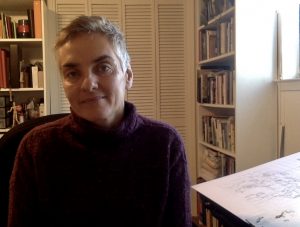
Maureen Burdock, University of California, Davis
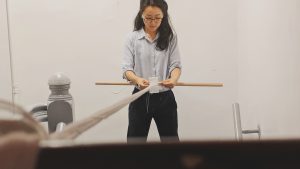
Josephine Lee, Parsons School of Design
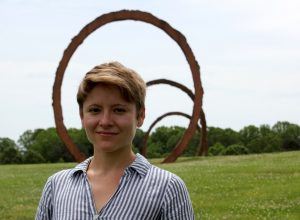
Brantly Hancock Moore, University of North Carolina at Chapel Hill
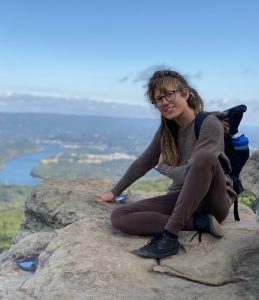
Nicole Winning, University of Massachusetts at Dartmouth
CAA INTERNATIONAL MEMBER CONFERENCE TRAVEL GRANTS
CAA awards the International Member Conference Travel Grant to artists and scholars from outside the United States as partial reimbursement of travel expenses to the Annual Conference.

Alex Burchmore, Australian National University

Panos Kompatsiaris, National Research University Higher School of Economics,Moscow
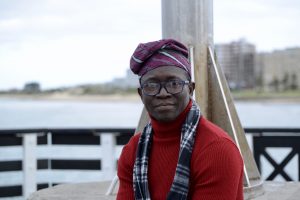
Stephen Adéyemí Folárànmí, Rhodes University, South Africa
CAA TRAVEL GRANT IN MEMORY OF ARCHIBALD CASON EDWARDS, SENIOR, AND SARAH STANLEY GORDON EDWARDS
Established by Mary D. Edwards with the help of others, the CAA Travel Grant in Memory of Archibald Cason Edwards, Senior, and Sarah Stanley Gordon Edwards supports women who are emerging scholars at either an advanced stage of pursuing a doctoral degree or who have received their PhD within the two years prior to the submission of the application.
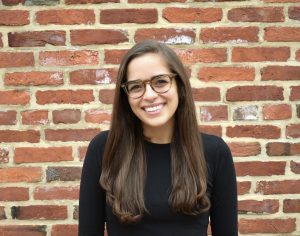
Kristen Nassif, University of Delaware
Paper: Seeing Through Blindness: Disability, Tactile Relief Maps, and Geography
Session: Disability in the Arts: The Active Participation of People with Disabilities in the Arts
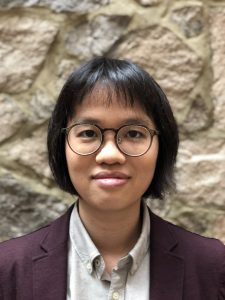
Shirlynn Sham, Yale University
Paper: The Eighth Wonder of the World: Design and Danger in Marc and Isambard Brunel’s Thames Tunnel Project
Session: Topographical Drawing
SAMUEL H. KRESS FOUNDATION CAA CONFERENCE TRAVEL FELLOWSHIP FOR INTERNATIONAL SCHOLARS
Recognizing the value of first-hand exchanges of ideas and experience among art historians, the Kress Foundation is offering support for international scholars participating as speakers at the 2020 CAA Annual Conference. The scholarly focus of the papers must be European art before 1830.
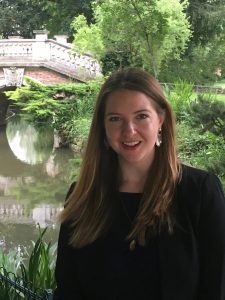
Sophie Ong, Rutgers University
Paper: ‘I pray…that I may have sommethyng for my nekke’: Understanding Jewelry and Its Popularity in the Late Middle Ages and Today
Session: Kitsch and Craft in the Middle Ages: Making Medieval Art Popular

Bruno Ligore, Nice University, France
Paper: Embodying the Antique in the Early 19th Century: Ballet Masters’ Drawing Practices
Session: Dancing in the archives: choreographers’ drawings as resources for art historians (19th-20th centuries)
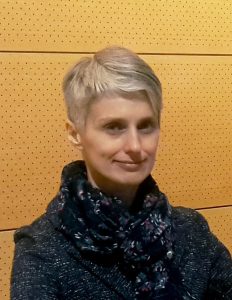
Halyna Kohut, Ivan Franko National University of Liviv, Ukraine
Paper: Is it the Rug or the ‘Other’?
Session: Different Shades of Othering: Orientalism/Occidentalism in the World of Art
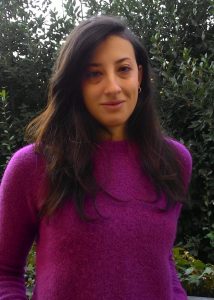
Elisa Antonietta Daniele, University of Verona, Italy
Paper: Performing Bodies, Dancing Trifles: Drawing New Worlds in Il Tabacco, Commemorative Album for the Courtly Ballet Staged in Turin (1650)
Session: Early Modern Animation: Mascarades, Ballet, Automata
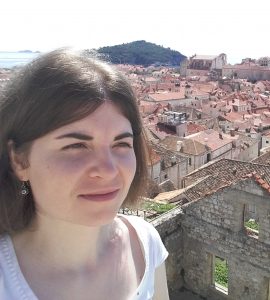
Estefanía López-Salas, Universidade da Coruña, Spain
Paper: Towards a Web-Based Representation of Spatial Change Over Time at San Julián de Samos
Session: Advanced Topics in Digital Art History: 3D (Geo)Spatial Networks
Elena Granuzzo, Independent Scholar, Italy
Paper: The Cicognara Library and Michelangelo Buonarroti: A Historiographical Reading through the Sources
Session: Historic Libraries and the Historiography of Art (II)
CAA-GETTY INTERNATIONAL PROGRAM
Every year since 2012, the CAA-Getty International Program has brought between fifteen and twenty art historians, museum curators, and artists who teach art history to attend CAA’s Annual Conference. This program is funded on an annual basis by the Getty Foundation. Click here to meet the CAA-Getty International Program participants.
Apply for a Childcare Grant for CAA 2020
posted by CAA — Dec 06, 2019
Thanks for your interest! As of January 2, 2020, childcare grants are at capacity and the application portal is closed.
CAA recognizes the need among members for childcare support during the Annual Conference. In our effort to better meet these needs, CAA now offers grants of up to $250 per family.
Grants are available for CAA members who are registered for the conference and will bring their child to the conference, or who will incur extra care-giving expenses while away from their dependents.
Deadline to apply: January 5, 2020
Grant funding is limited and grants will be filled on a first-come, first-served basis. (If you signed up for the now-canceled onsite care with Kiddie Corp, you will be given priority.) The grants will be given as a reimbursement for expenses up to $250 upon submission of receipts or invoices.
Examples of allowable expenses
- Childcare expenses incurred on-site at the conference.
- Daycare above and beyond what is normally scheduled because member is attending the conference (for example, overtime at a daycare center, cost of a sitter, etc.)
- Travel expenses incurred in bringing a caregiver/family member to supervise your child at the conference or at your home.
- Travel expenses incurred in bringing a child to a caregiver/family member.
Note: Care must occur during the conference dates. Attendees are responsible for making their own arrangements. CAA does not sanction or recommend childcare providers and does not assume responsibility or liability for childcare services of any sort. It is the responsibility of the parent(s) to thoroughly investigate all childcare providers.
Expenses not eligible for reimbursement
- Normally scheduled childcare expenses in your home city.
- Toys, and tickets to museums, amusement parks, etc.
- Travel or other expenses related to the attendee’s participation in the meeting, conference registration, meals, or other expenses the attendee would already be incurring by attending the meeting.
Reimbursement procedure
- Reimbursement forms will be distributed to grantees upon notification, the completed PDF must accompany a scan of receipts.
- Recipients of a grant must submit receipts for reimbursable expenses by email to Mira Friedlaender, mfriedlaender@collegeart.org with the subject line “Child Care Reimbursement”, by March 5, 2020
- Reimbursements will be distributed within 3-4 weeks of CAA’s receipt of complete documentation.
Grants will be awarded on a rolling basis. The deadline to apply for the grant is January 5, 2020.
Questions about childcare grants for the Annual Conference? Email mfriedlaender@collegeart.org
The following Chicago-based childcare services are available for attendees seeking childcare during conference. CAA has no contract with these service providers, and this list should not be considered an endorsement of any companies listed.
American Childcare
207 East Ohio Street, 121, Chicago, IL 60611
Phone: 312-644-7300
Website: http://www.americanchildcare.com/hotel_babysitting.htm
College Sitters
1000 West Diversey Parkway, 234, Chicago, IL 60614
Phone: 773-697-9326
E-mail: lincolnparkil@collegenannies.com
Website: http://www.collegenanniesandtutors.com/nechicagoil
Sitters Studio
Phone: 312-890-8194
E-mail: bookchicago@sittersstudio.com
Website: http://www.sittersstudio.com/hotel-care/
Member Spotlight: Barbara Hoffman
posted by CAA — Nov 21, 2019
Up next in our Member Spotlight series, we are highlighting the work of Barbara Hoffman, founder and principal of The Hoffman Law Firm and a pioneer in the field of art law who served as CAA’s pro bono legal counsel for ten years. Joelle Te Paske, CAA’s media and content manager, spoke with Barbara over the phone to learn about her rich history with CAA. Read the interview, edited for length and clarity, below.

Image courtesy Barbara Hoffman.
Hi Barbara. I’m delighted to have the chance to speak with you. You are one of our esteemed lifetime members who has been a part of the organization in various capacities for more than 40 years. That’s incredible.
The pleasure is mine. I loved working with CAA during my tenure there.
Just looking over your bio on your website, I’m just amazed at how many different roles you’ve taken on over your career as an art lawyer. How did you first get involved with CAA?
I’ve always been interested in art, and I studied in Paris at the Académie Julian during my junior year when I majored in French and Art History. But I wasn’t very aware of the College Art Association.
After my studies, I was one of the early art lawyers. I had founded the Volunteer Lawyers for the Arts in the state of Washington, and continued to develop and write on the subject of art law, at a time when there were only a handful of people who were doing it.
Before then, I practiced civil rights law in New York. I’m from New York—I went to Columbia Law School—and was helping artists on the side when I was in my senior year. I volunteered as a lawyer for the first Volunteer Lawyers for the Arts in New York. I was then recruited to be a law professor in Seattle and I’d had so much fun with Volunteer Lawyers for the Arts that I thought I would join the Washington branch when I moved. When it didn’t exist, I ended up founding the statewide Washington Volunteer Lawyers for the Arts, and hosting an art law clinic at the law school.
Oh, interesting. So it started in New York and then you brought it over to the West Coast, in Washington.
Yes. Then eventually I moved back to New York and I joined the New York City Bar Art Law Committee. I was also Chair of the Public Art Subcommittee. We drafted a balanced, annotated model contract to be made available to artists and administrators. Percent for Art was just starting, and most artists and bureaucrats had little knowledge of copyright and other issues in public art.
The National Endowment for the Arts put together a task force of artists and administrators in which I was invited to participate, alongside Joyce Kozloff, who was on the CAA Board of Directors at the time. Susan Ball was executive director at the time. There was a feminist uprising, and my name was put forward to replace Gil Edelson.
I was CAA’s pro bono outside counsel and member of the executive committee for ten years. Among many activities, I wrote a column for CAA on legal issues. My fondest memories are those of working with the different CAA committees and their chairs. Particularly memorable was the work I did with Albert E. Elsen, a professor of art history and a great scholar on Rodin. We revised the guidelines for the code of ethics for art historians. And I worked with several well-known artists too, many of whom are no longer with us.
I also advised all the CAA publications. This was an interesting time for the issues of fair use and copyright in images. Through me, CAA got involved in what was called the Conference on Fair Use, taking place under the US Patent and Trademark Office and the US Copyright Office, which dealt with bringing copyright law into the digital world.
Before I came in to represent CAA, most of the people there were representing either libraries on one side, who were of course for fair use, or publishers, both trade book and academic publishers, who were of course for a stricter interpretation and enhanced copyright protection. But nobody was really talking about issues like images until we brought up to the subject.
On that issue I worked very hard, and CAA worked very hard. It was extremely controversial for the organization, because as you know, everybody at CAA wears multiple hats and the copyright issues involved both publishers and scholars. So I worked with the Copyright Committee and Fair Use and Christine L. Sundt, president of the Visual Resources Association and a member of CAA. She was a passionate devotee of legal issues there.
I imagine those are the fundamental building blocks for CAA’s Code of Best Practices in Fair Use that was published in 2015.
There are earlier versions of it, too. There was one during my tenure and then it evolved over time. We were never successful in terms of getting the government, the Conference on Fair Use, to be able to come together to develop official guidelines. I spent hours and hours and hours developing scenarios. We tried to get people’s agreement on the analysis and whether it was or wasn’t fair use. But at the end there was never a resolution of that and I think it continued on until 2015. It was a long-going effort. We were the first people to really address the whole issue in the late eighties, early nineties.
That’s fascinating. And especially now, with the emergence of the internet.
Another thing that we were really involved with during my tenure was the issue of freedom of expression. I represented CAA and was active in what we now call the Culture Wars, when Jesse Helms tried to ban the publication of [Robert] Mapplethorpe’s images. This was in 1989, and continued through the 1990s.
They were extremely active times. I’m most proud of the two-volume issue I did on censorship with Robert Storr for Art Journal. It was voted at the hundredth anniversary conference the best Art Journal that was published in the journal’s history.
To accompany this interview, we’ve brought the historic two-volume issue out from behind the paywall for readers to explore through the end of December 2019: Censorship I and Censorship II
For the double issue, I dedicated my statement to Justice Brennan of the Supreme Court. In my view, his decisions on the Supreme Court regarding the First Amendment and freedom of expression basically did more to provide contours of protection for artistic expression than any other Supreme Court Justice.
Then Rob Storr made his editor’s statement a full reprint of Mapplethorpe’s X Portfolio. He got permission from the Mapplethorpe Foundation because of his connections to publish them, but when we sent it to our normal printer, they were afraid to publish it because they thought they (or CAA) would be sued for pornography. They asked us to find a different printer. So we sent it around to all these places that might publish pornography. But the pornography magazines that we sent them to didn’t have the quality that we would require for the CAA journals! So we went to The Burlington Magazine and asked them if they would print it. It was much more expensive, but our usual printer paid the difference. So it was actually printed, by my recollection, by The Burlington Magazine.
There were two fall outs from the issue. The first fall out was a number of CAA members dropped their membership. Pretty amazing. They said the issue should have come with a warning label. You know, they got it in the mail, they left it on the table, and then their children saw it, with no warning.
Another spin off was because the CAA journal goes to every single university that’s a member for the library and art departments, the images that people had been talking about—but never saw—were suddenly available. As part of this I ended up participating in a panel at the University of Nashville, defending a professor who had brought that issue to his class of drawing and photography.
It was all a very meaningful experience. As a result, I was involved in authoring two friends of the court briefs, in the district court and the appellate court, on behalf of the College Art Association. Those were then quoted by the court defending Karen Finley and what they called the NEA Four [Karen Finley, Tim Miller, John Fleck, and Holly Hughes], who had their NEA grants declined because of the Helms amendment. So we introduced a friend of the court brief on behalf of College Art Association, and another one was on behalf of College Art Association and PEN America.
Later on, the organization’s centennial publication featured an image from Faith Ringgold’s French series that I licensed as her lawyer at the time. Faith was an active CAA member on the board and committee on diversity.
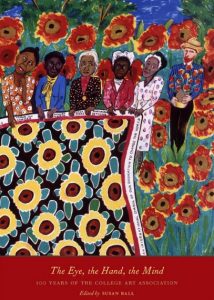
CAA’s centennial publication,The Eye, The Hand, the Mind: 100 Years of the College Art Association, with Faith Ringgold’s The Sunflower Quilting Bee at Arles (1996) on the cover.
The complexity of being an art lawyer—it brings you into so many different issues.
It was great. As I said, I worked with all the CAA Committees over that time. I still go to conferences from time to time and participate. And I just, you know, I’m happy to see so many artists that I’ve worked with being rewarded over time by the CAA. I’ve shown up for their presentations, the last ones being Howardena Pindell and Ursula von Rydingsvard for lifetime achievements.
Yes! Our 2019 honorees.
So I’m still keeping up and seeing how the organization has grown and changed. My legacy is these cases, my friends, and the guidelines. A wonderful opportunity for me to combine my passions—law and art history. As a member of the Executive Committee I attended all the CAA annual conferences, and when I wasn’t doing official business, I’d go to art history sessions. I have very happy memories of the wonderful people that I met there. I’m still in contact with many of them. That’s a part of my life that’s ongoing.
That’s wonderful.
And I’m still doing the same thing—still fighting for artists. Still fighting for the first amendment. Still doing public art. So, I feel very fortunate to be a life member.
Barbara Hoffman Biography
The Hoffman Law Firm continues as a preeminent global art and copyright boutique with a focus on Europe, Asia, Africa, and the United States. Author and editor of A Visual Artist’s Guide to Estate Planning (1996 and 2008), Barbara Hoffman also advises artists, galleries, and their estates on legacy planning, and endowed foundations.
Barbara has been recognized by her peers and clients with leadership posts and honor, including as Chair of the New York City Bar Association Committee on Art Law, Chair of the International Bar Association Committee on Art and Cultural Institutions and Heritage Law, and being selected to New York Super Lawyers, Best Lawyers in America, and Best Law Firms in art law and copyright law (2012-2020).
In addition to her service on the CAA executive committee, Barbara serves or has served on many boards, including ArtTable, Performa and the boards of several artists’ foundations. She was voted one of Art and Auction 51’s Power Women in the Art World 2016. www.hoffmanlaw.org
Meet the Meiss Fund Recipients for Fall 2019
posted by CAA — Nov 21, 2019

Carvings at the Kailāsanātha Temple in Kāñcīpuram. Photo by mckaysavage, CC BY 2.0
MEET THE GRANTEES
Twice a year, CAA awards grants through the Millard Meiss Publication Fund to support book-length scholarly manuscripts in the history of art, visual studies, and related subjects that have been accepted by a publisher on their merits, but cannot be published in the most desirable form without a subsidy.
Thanks to the generous bequest of the late Prof. Millard Meiss, CAA began awarding these publishing grants in 1975.
The Millard Meiss Publication Fund grantees for Fall 2019 are:
- Anneka Lenssen, Beautiful Agitation: Modern Painting in Syria and the Arab East, University of California Press
- Padma Kaimal, A Balance of Opposites: Reading Material Form at the Kailāsanātha Temple in Kāñcīpuram, University of Washington Press
- Babette Bohn, Women Artists, Their Patrons, and Their Publics in Early Modern Bologna, Penn State University Press
- Elina Gertsman, Nothing is the Matter: Spaces of Absence in Late Medieval Art, Penn State University Press
- Lucy Donkin, Standing on Holy Ground in the Middle Ages, Cornell University Press
- Adrian Anagnost, Spatial Orders, Social Forms: Art and City Space in Modern Brazil, 1928-69, Yale University Press
Read a list of all recipients of the Millard Meiss Publication Fund from 1975 to the present. The list is alphabetized by author’s last name and includes book titles and publishers.
BACKGROUND
Books eligible for a Meiss grant must currently be under contract with a publisher and be on a subject in the arts or art history. The deadlines for the receipt of applications are March 15 and September 15 of each year. Please review the Application Guidelines and the Application Process, Schedule, and Checklist for complete instructions.
CONTACT
Questions? Please contact Cali Buckley, Grants and Special Programs Manager, at cbuckley@collegeart.org.



